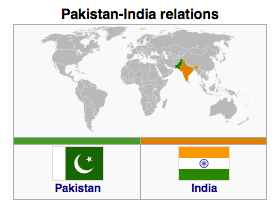Parsing The Addu Declaration – Analysis
By IPCS
By PR Chari
With atypical attention-grabbing flourish the just-concluded 17th SAARC Summit in Maldives has been described by the media as indicating that SAARC has reached a tipping point. But this has repeatedly been stated over the past three decades since SAARC was established in December 1985 following an initiative taken by Zia-ur-Rahman of Bangladesh. There is absolutely no doubt that SAARC has moved some distance since its first summit in Dhaka, but the pace has been rather slow.
The two most prominent reasons for SAARC remaining effete over the years are familiar to everyone. First, the implacable hostility of Pakistan towards India, which informed the former to use all available international gatherings, including SAARC, to raise controversial issues like Kashmir to disrupt and dampen the proceedings. Second, the smaller countries in SAARC were not remiss in using this forum to disparage India for its allegedly hegemonistic designs upon the South Asian region. In truth, India was a very reluctant entrant into SAARC. It had realistically assessed at that time (early eighties) that SAARC would be used for ‘India-bashing’, as it provided an opportunity for its neighbors to ‘gang up’ against India. At the same time, larger considerations informed India that it would be seen as a ‘spoiler’ by the international community; hence India agreed, reluctantly, to join SAARC.
In terms of its charter, bilateral issues are not permitted to be raised in SAARC Summits. All decisions must also be reached by consensus, which has inhibited progress in SAARC forum. There is little doubt, moreover, that with the global financial crisis looming hugely over the international system, economics has been fore-grounded, while politics has receded somewhat into the background. Consequently, it is theoretically possible to argue that greater trade and commerce between adversarial nations can mitigate political tensions that divide them. But reality intrudes into this simple formulation and renders it untrue.

India and Pakistan are the two largest countries in South Asia, and their embroils have excoriated SAARC over the years, while the smaller nations in South Asia have sought to exploit this situation to serve their own national interests. Therefore, the device of a retreat has been conceived whereby the leaders meet bilaterally on the margins of summit meetings and resolve their mutual differences and other issues. This might have proven useful on certain occasions provided the political will was present and adequate preparatory work had been done. Currently, there is much euphoria that a ‘breakthrough’ in Indo-Pak relations has been achieved and that bilateral trade will grow exponentially. But, these are preliminary endeavours and the two nations will need to take hard decisions when they return to their national capitals and face up to the harsh constraints of domestic politics.
The overarching theme of the recently summit was “Building Bridges” and the Addu declaration, issued thereafter, called for energizing the South Asian Free Trade Area (SAFTA) agreement, reducing items in the ‘sensitive lists,’ reviewing non-tariff barriers, and harmonizing standards and customs procedures; permitting greater flow of financial capital and intra-regional long-term investment, concluding the regional railways agreement and finalizing a Motor Vehicles Agreement; besides addressing the issues of an Indian Ocean Cargo and Passenger Ferry Service.
These thrust areas are closely related to “building bridges” between the South Asian countries. But there is much else that finds mention in the Addu declaration like negotiating framework agreements for energy cooperation and regional power exchange; establishing a SAARC market for electricity; addressing climate change; investing in renewable energy; starting a food bank; rooting out terrorism, illegal trafficking in narcotics and small arms; combating terrorism and maritime piracy. There is much else; in fact, the list is almost unending.
It is wholly unsurprising therefore that a major reason for SAARC to have met with so little success is that it has attempted to do so many things with little effort to prioritize all these difficult problems into a work agenda. Inevitably, this inchoate agenda has resulted in a diffusion of the focus. But, the more pertinent reason underlying SAARC’s exceedingly modest success over the last quarter century is the unfortunate reality that a vast chasm exists between rhetoric and action. SAARC leaders have no difficulty in making the most extravagant commitments in SAARC Summits, but forgetting about them almost immediately thereafter, until the next meeting comes around. Hence, the need to bridge the gap between rhetoric and action cannot be over-emphasized.
Why this chasm exists between rhetoric and action could be placed on the agenda of the next summit meeting, and the host of other meetings that are regularly occurring between SAARC officials, and also the plethora of Track-II efforts taking place between people of goodwill in South Asia. Any light emerging on this critical issue could ensure that SAARC becomes something more than a talk-shop, as at present.
PR Chari
Visiting Professor, IPCS
email: [email protected]
